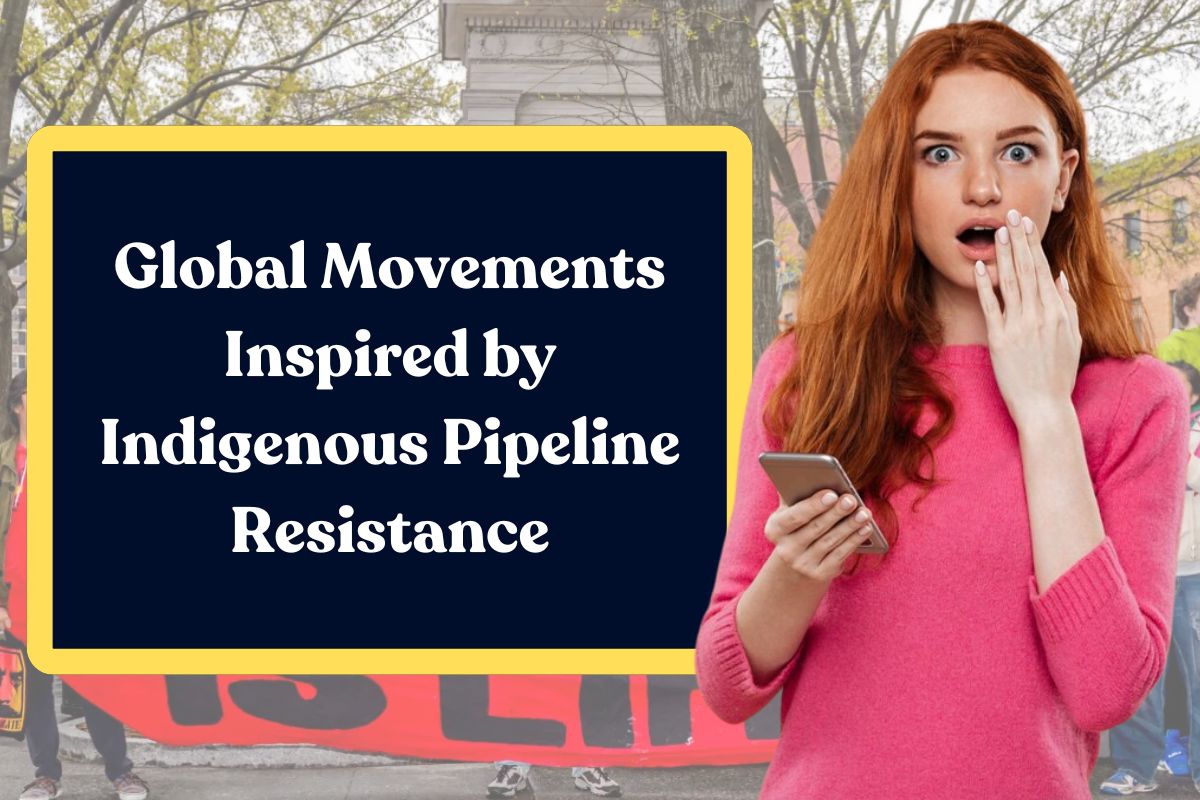The Indigenous Pipeline is an organisation that has been created to oppose the construction of pipelines near their ancestral property, as they have concerns about environmental damage, Cultural preservation, and treaty rights violations.

With time, the movement became stronger and showed solidarity and interconnectedness towards environmental justice, Climate action, and indigenous rights. Many other organisations got inspired by the indigenous pipeline and started their movement, and some of the famous movements are given below:
Top 10 Global Movements inspired by Indigenous Pipeline Resistance:
Standing Rock Movement:

The Standing Rock movement was a grassroots protest that was led by the Standing Rock Sioux Tribe against the construction of the Dakota Access Pipeline. The construction of the Pipeline started to run along the Missouri River, which was near the Standing Rock reservation and was threatening the tribe’s water supply and sacred lands. It was started in 2016, and apart from Indigenous people, many other people also joined the movement to demand indigenous rights and environmental protection.
Wet’ suwet’en resistance:

It is a second movement inspired by the indigenous pipeline resistance. This protest has started to protect the traditional territory from the Coastal Gaslink pipeline. The traditional people assert the title and deny the construction of the pipeline under the governance of the hereditary chief. After a while, it became violent as Canadian police started to intervene, and some of the people faced legal challenges as well.
Idle No More:

Idle No More started in 2012 in Canada. It was a grassroots Indigenous movement started in response to the Canadian government’s omnibus bill, C-45, and the impacts on the land of Indigenous people and environmental protection.
It also includes the changes to the Indian Act and the Navigable Protection Act, as both acts are undermining the rights and environmental protection. This movement was focused on protecting Indigenous Sovereignty and treaty rights, and safeguarding the natural resources.

Unist’ot’en Camp:
This camp is located on Wet’suwet’en territory in British Columbia, and it is one of the most well-known acts to resist the different pipeline projects by involving the indigenous jurisdiction and sustainable community. Here, people believe that the land belongs to them and it is not a separate part, so they have to take care of it.
A constant increase in pipeline projects was not acceptable to the local people, and three companies, Chevron, Enbridge, and TransCanada, started their projects without the consent of the local people. So, a cabin was built in the exact place where one of the three companies wants to start their project.
Tiny House Warriors:
It is a group in Canada that builds little houses to resist the pipeline projects of the trans mountain Pipeline expansion because it harms their territory and rights. This movement aims to stop the project and wants to strengthen their Secwepemc culture and tradition by developing a village site. All the action taken by the people shows them as land defenders who are fighting for their culture, territory from people who were developing the industries.
Line 3 Resistance Movement:
Line 3 movement started in December 2020 to late 2021 to show aggression for the Enbridge 3 oil pipeline in Minnesota. Many activists protested against the pipeline construction because of the environmental damage, as the leak in the Oil pipeline can disrupt the environment.
This movement is led by the Indigenous water protectors because the route of the pipeline includes wetlands, the Treaty land of the Anishinaabe people, and waterways. Enbridge’s oil pipeline also violates Indigenous sovereignty and treaty rights because Line 3 carries sand oil that contains carbon-intensive fuel, which increases greenhouse gas emissions.
Families of sisters in spirit:
FSIS is a volunteer-led organization founded in 2011. This organisation aims to support the Indigenous families whose members were missing and murdered. Bridget Tolley started it as a need to support the people who were facing the crisis and wanted to have emotional and financial support.
The people who work here are the members of the family who have lost their loved ones and are now interested in supporting other people. It is a safe place for people who want to release their emotions and share their experiences. FSIS is also actively involved in highlighting the issue of inequality and violence faced by the Indigenous people, even there were some incidents when women and girls were murdered and kidnapped.
Indigenous Environmental Network:
IEN is an indigenous organization that started to focus on environmental and economic issues faced by indigenous people. It was founded in 1990 to address the particular issue related to environmental and economic injustice, especially in the region of North America. The mission of IEN is to protect the environment, the rights of indigenous people, and self-determination by expanding the indigenous teaching and natural laws.
The issues they address are the fossil fuel industry, which harms the land as it creates pollution in the environment, and all the burden just carried by the indigenous people.
The Fish Wars:
The fish war is a part of a series that includes the protest and civil disobedience movement by the tribes of native Americans. It was started in the 1960s and 1970s in the Pacific Northwest, and demanded a treaty with the U.S government to secure the fishing rights.
The people of this tribe were facing legal actions and were arrested by the police for fishing outside their reservation boundaries. In 1974, this whole movement gained national attention, which helped them to receive the Tribal fishing rights. To gain the attention tribe organised the Fish-ins campaign in which they intentionally started to violate the state fishing laws.
Black Lives Matter:
Black Lives Matter is an indigenous movement to challenge the racism, inequality, and discrimination practiced by the system and people. Many black people were facing police brutality and violence because of their skin colour.
The Movement gained attention in 2020 because of the murder of George Floyd by Derek Chauvin, who was a Minneapolis officer. To show solidarity, around 26 million people participated in the protest, and white people also showed their support.
All the given movements were started by the indigenous people for justice, protection, and basic rights, which also shows solidarity towards each other. In the beginning, they did not get enough support, but over time, most of the movements gained national attention.






